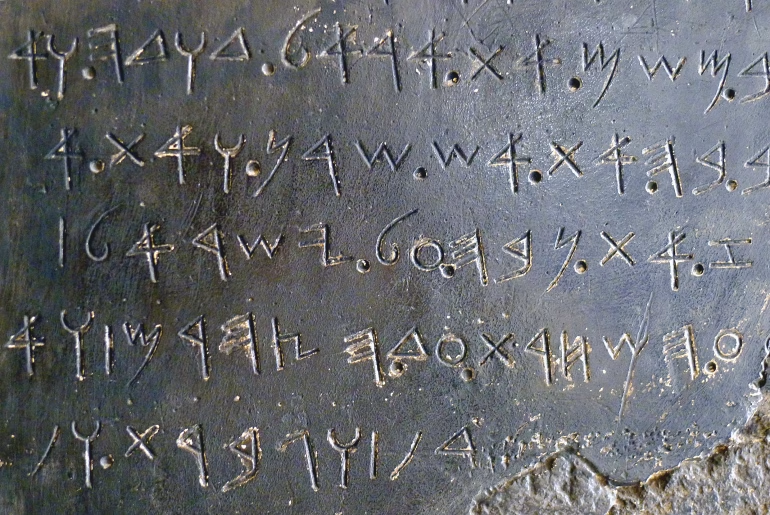The strongest “evidence” for the Trinity in the Bible is the verse 1 John 5:7 or otherwise known as the ‘Johannine Comma’. Unfortunately for the Trinitarians, it has long been known by scholars that it is not part of the original text. It was never in the Greek manuscripts, but surfaced in the Latin translation in the fifth century, after the Trinity doctrine had been accepted.
It appears that a ‘gloss’ — a marginal comment in a Bible — had found its way into the Latin Bible. Due to some “unfortunate politics”, Erasmus, who compared various manuscripts in the 16th century to select what he thought was the best Greek text, included the verse against his better judgment in his third edition of the New Testament. From there, it found its way into the King James Version, which was based on Erasmus’ text.
Christian scholars have also agreed that the verse was fabricated. This is further evident when we compare the King James Version (KJV) with the more modern Bible translations, the Revised Standard Version (RSV), the New International Version (NIV), the Good News Bible (GNB), and the Living Bible Version (LBV) and contrast this particular verse within these Bibles :
K.J.V.: “For there are three that bear witness in Heaven, the Father, and the word and the Holy Ghost, and these three are one”
R.S.V.: (not included)
N.I.V.: “For there are three that testify ; the Spirit, the Water, and the Blood and these three are in agreement.”
G.N.B.: “There are three witnesses ; the Spirit, the Water, and the Blood.”
L.B.V.: (not included)
The reason why the ‘Johannite Comma’ is not included in the most recent versions of the Bible is evident when we read in The Interpreter’s Dictionary of the Bible that
The text about the three heavenly witnesses (I John 5:7 KJV) is not an authentic part of the NT.
The Interpreter’s Dictionary of the Bible, Vol. 4, p. 711, Abingdon Press
Further, it also states that
1 John 5:7 in the KJV reads : ‘There are three that bear record in heaven, the Father, the Word, and the Holy Ghost : and these three are one’ but this is an interpolation of which there is no trace before the late fourth century.
ibid., Vol. 4, p. 871, Abingdon Press
The Eerdman’s Bible Dictionary states an almost similar objection :
1 John 5:7 in the Textus Receptus (represented in the KJV) makes it appear that John had arrived at the doctrine of the trinity in explicit form (‘the Father, the Word, and the Holy Ghost’), but this text is clearly an interpolation since no genuine Greek manuscript contains it.
Allen C. Myers (ed.), The Eerdmans Bible Dictionary, p. 1020
The great luminary of Western literature, Mr. Edward Gibbon, explains the reason for the discardal of this verse from the pages of the Bible with the following words :
Of all the manuscripts now extant, above fourscore in number, some of which are more than 1200 years old, the orthodox copies of the Vatican, of the Complutensian editors, of Robert Stephens are becoming invisible ; and the two manuscripts of Dublin and Berlin are unworthy to form an exception…In the eleventh and twelfth centuries, the Bibles were corrected by LanFrank, Archbishop of Canterbury, and by Nicholas, a cardinal and librarian of the Roman church, secundum Ortodoxam fidem. Notwithstanding these corrections, the passage is still wanting in twenty-five Latin manuscripts, the oldest and fairest ; two qualities seldom united, except in manuscripts.…The three witnesses have been established in our Greek Testaments by the prudence of Erasmus ; the honest bigotry of the Complutensian editors ; the typographical fraud, or error, of Robert Stephens in the placing of a crotchet and the deliberate falsehood, or strange misapprehension, of Theodore Beza.
Edward Gibbon, Decline and Fall of the Roman Empire, IV, p. 418
Peake’s Commentary on the Bible says that :
The famous interpolation after ‘three witnesses’ is not printed even in RSV, and rightly. It cites the heavenly testimony of the Father, the logos, and the Holy Spirit, but is never used in the early Trinitarian controversies. No respectable Greek MS contains it. Appearing first in a late 4th-cent. Latin text, it entered the Vulgate and finally the NT of Erasmus.
It was only the horrors of the infamous Church inquisitions which held back Sir Isaac Newton from openly revealing these facts to all :
In all the vehement universal and lasting controversy about the Trinity in Jerome’s time and both before and long enough after it, the text of the ‘three in heaven’ was never once thought of. It is now in everybody’s mouth and accounted the main text for the business and would assuredly have been so too with them, had it been in their books…Let them make good sense of it who are able. For my part I can make none. If it be said that we are not to determine what is scripture and what not by our private judgments, I confess it in places not controverted, but in disputed places I love to take up with what I can best understand. It is the temper of the hot and superstitious part of mankind in matters of religion ever to be fond of mysteries, and for that reason to like best what they understand least. Such men may use the Apostle John as they please, but I have that honour for him as to believe that he wrote good sense and therefore take that to be his which is the best.
Sir Isaac Newton, as cited by Muhammad Ata’ Ur-Rahim, Jesus : A Prophet of Islam, p. 156
Conclusions
We have seen how Christian scholars themselves have agreed that 1 John 5:7, the most significant verse in the New Testament to depict the Trinity, was inserted into the text and not part of the original.
Hence, with this “Trinitarian” verse being confirmed as a fabrication, where is the justification for the Trinitarian beliefs held by Christians today ?




